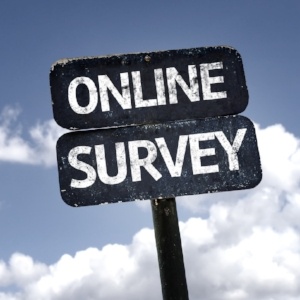
5 Steps to Creating a Successful B2B Market Research Survey
 Creating a successful B2B market research survey requires careful planning and development; especially since the data will be used to make key business decisions regarding investments, resources, strategy, and so on. Generally, the process involved five steps:
Creating a successful B2B market research survey requires careful planning and development; especially since the data will be used to make key business decisions regarding investments, resources, strategy, and so on. Generally, the process involved five steps:
Step 1: Define the Problem
While market research can — and typically does — reveal some unexpected and illuminating insights, it is fundamentally not an exploratory exercise: it is a strategic process. As such, the first step in B2B survey design is to define the practical and priority business problem that the survey (once developed) will solve.
Step 2: Identify Target Respondents
Once the problem is defined, the next step is to identify who needs to be consulted (i.e. who needs to receive the survey). It is vital to target decision-makers and/or key opinion leaders (KOLs), since their feedback is going to be the most valuable and actionable.
Step 3: Survey Design
The importance of good B2B market research survey design cannot be underestimated; especially since is the area where many DIY market research projects (even when using online tools) fall off the rails. B2B survey respondents have very limited time, and will not tolerate a poorly designed survey. If they find it superficial, confusing or annoying (i.e. repetitive questions, asking too much personal information, etc.) they will simply not fill it out.
In some cases, providing an incentive may also be part of the survey design. While with B2C market research participants this is often in the form of gift cards or cash, with B2B participants the reward for participating could be receiving an exclusive white paper (which may be based on the survey results once analyzed and reported), or some other business-appropriate incentive.
What’s more, B2B market research surveys can be distributed by mail, email, phone, web and mobile. Each of these channels has variables and dynamics that must be factored into the overall design. For example, digital surveys typically need to have shorter questions, but can use check boxes, radio buttons and pull-down menus.
Step 4: Survey Distribution
Once the survey is developed, it must be distributed with a timestamp — i.e. participants must know by when they need to complete the survey; both because some of them will not pay attention without a deadline, and because it is not feasible to have data streaming in once the analysis starts.
Step 5: Analysis
There are multiple methods and techniques of analyzing data. Choosing the right one (which should be in place long before this step arrives) is essential to ensure that insights are reliable. Surveys that use digital delivery can also take advantage of automation to make things more efficient.
Step 6: Reporting
Last but not least, the analysis needs to be articulated in stakeholder-specific reports — i.e. executives have different information requirements than technical teams, and so on. One of the biggest limitations of online market research tools is that they have one-size-fits-all reports, which is simply not how information is accessed or used in business environments.
Learn More
To learn more about how we can design and manage your end-to-end B2B market research survey, contact the Communications For Research team today. You’ll speak with co-CEO Colson Steber about your business goals and how market research can get you there.
If you’re looking for more information on how to best utilize market research surveys, download our free eBook “The Insider's Guide to Successfully Using Market Research Online Surveys" today:



